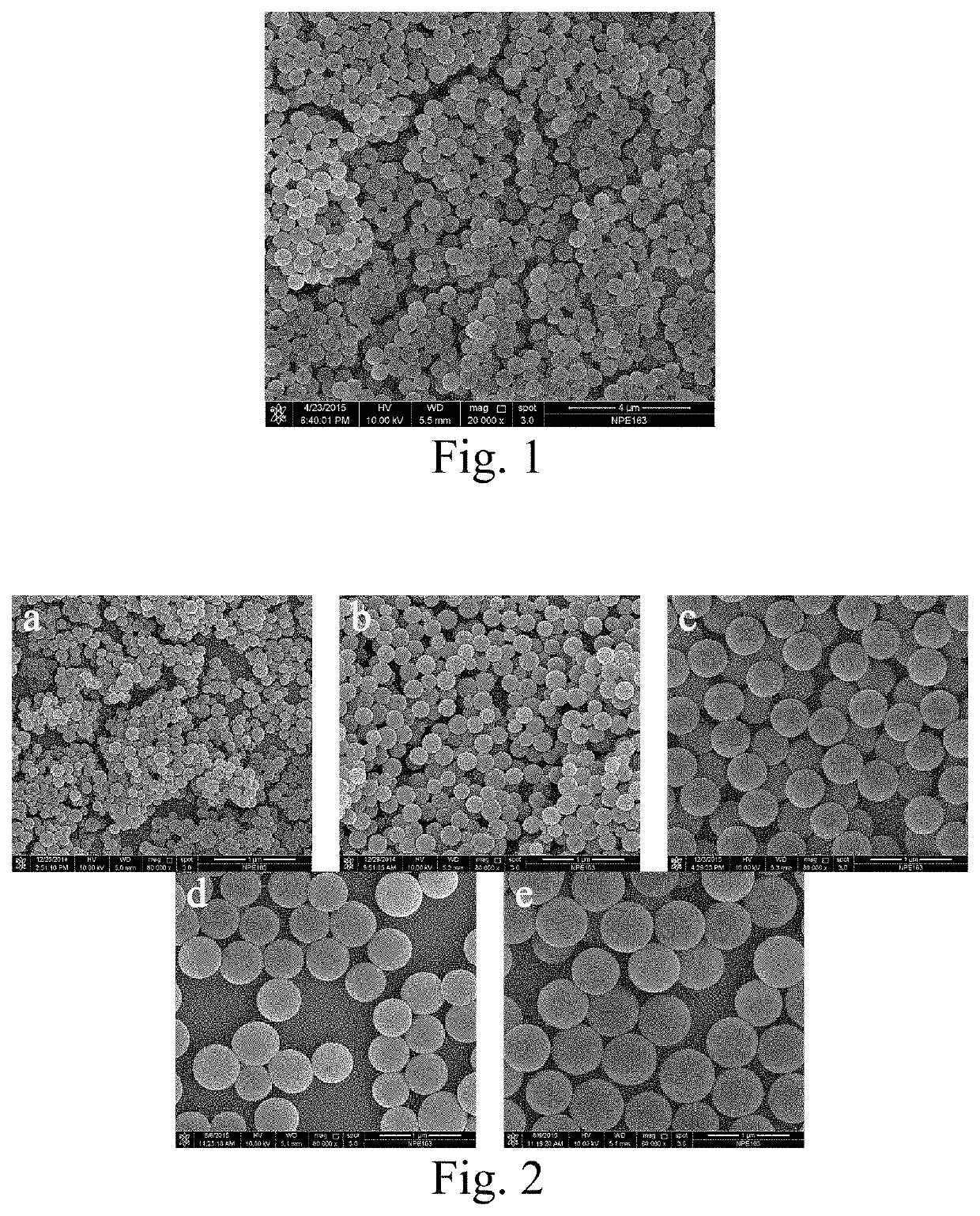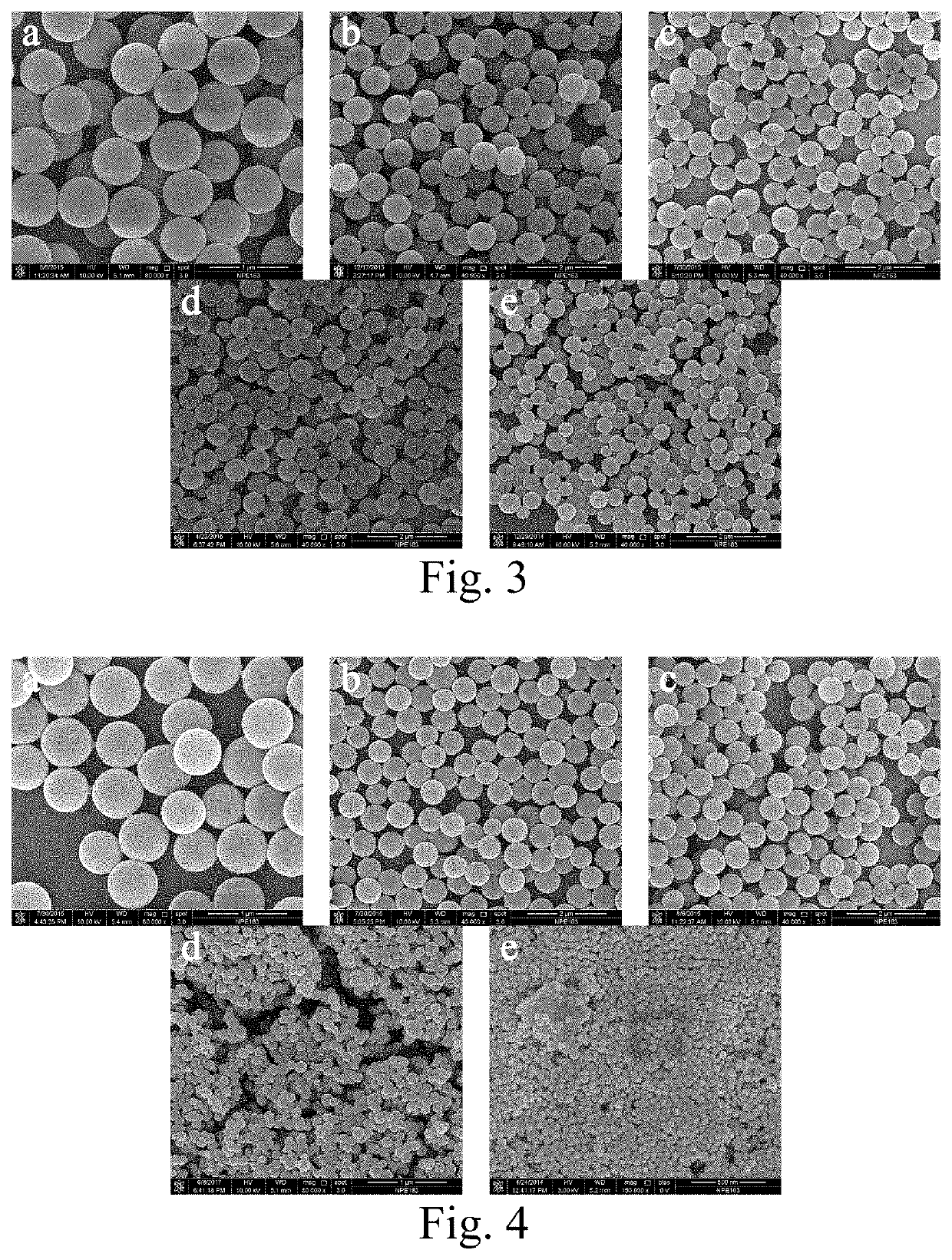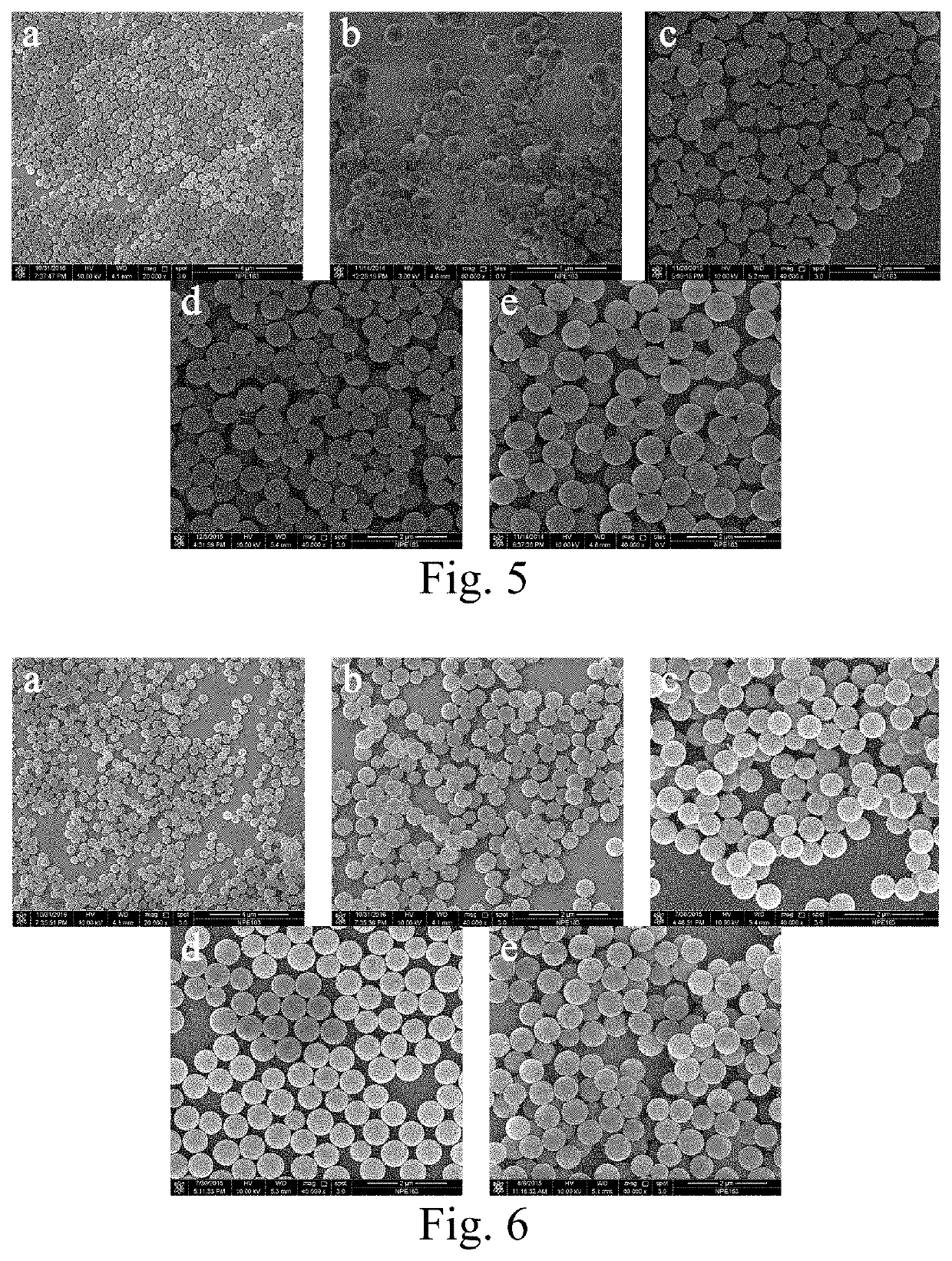Heteroatom doped Polymer Nanospheres/Carbon Nanospheres and Preparation Method Thereof
- Summary
- Abstract
- Description
- Claims
- Application Information
AI Technical Summary
Benefits of technology
Problems solved by technology
Method used
Image
Examples
embodiment 1
[0071]10 g (0.08 mol) melamine and 3.01 g (0.016 mol) 2,4-diaminobenzenesulfonic acid were dissolved in 2000 mL water, 5 mL aqueous ammonia was dropwise added, and the solution was stirred with rotate speed of 500 rpm at the temperature of 25° C. until uniform and transparent; then 50 mL methanal aqueous solution was added, after about 3 minutes, the liquid appeared visibly turbid; keeing 25° C., the solution was stirred at 500 rpm for 2 hours, the product were centrifuged, washed, and dried, then observed by electron microscopy. As shown in FIG. 1, the nanospheres were uniform with an average particle size of 512 nm.
embodiment 2
[0072]0.19 g (0.0015 mol) melamine and 0.058 g (0.0003 mol) 2,4-diaminobenzenesulfonic acid were dissolved in 50 mL water, 0.1 mL aqueous ammonia was dropwise added, and the solution was stirred with rotate speed of 500 rpm at the temperatures of 5° C., 15° C., 25° C., 35° C. and 45° C. respectively until uniform and transparent; 1.2 mL methanal aqueous solution was added respectively, after about 45 seconds, the solutions became turbid from clear; keeping the temperature, the solution was stirred at 500 rpm for 2 hours; after the reactions were completed, the products were centrifuged, washed, and dried to obtain polymer nanospheres containing nitrogen and sulfur, and observed by electron microscopy. As shown in FIG. 2, the temperature conditions in FIG. 2a to FIG. 2e were 5° C., 15° C., 25° C., 35° C. and 45° C. successively, and the nanospheres were uniform with each average particle size of 148 nm, 257 nm, 513 nm, 627 nm and 845 nm.
embodiment 3
[0073]melamine of 0.19 g (0.0015 mol) and 2,4-diaminobenzenesulfonic acid respectively of 0.0145 g (0.000075 mol), 0.029 g (0.00015 mol), 0.058 g (0.0003 mol), 0.116 g (0.0006 mol), 0.174 g (0.0009 mol) were dissolved in 50 mL water, 0.1 mL aqueous ammonia was dropwise added, and the solutions were stirred with rotate speed of 500 rpm at the temperature of 25° C. until uniform and transparent; 1.2 mL methanal aqueous solution was added respectively, after about 45 seconds, the solutions became turbid from clear; keeping 25° C., the solutions were stirred at 500 rpm for 2 hours.
[0074]After the reactions were completed, the products were centrifuged, washed, and dried to obtain polymer nanospheres containing nitrogen and sulfur, and observed by electron microscopy. As shown in FIG. 3, the amounts of 2,4-diaminobenzenesulfonic acid in FIG. 3a to FIG. 3e were 0.0145 g (0.000075 mol), 0.029 g (0.00015 mol), 0.058 g (0.0003 mol), 0.116 g (0.0006 mol), 0.174 g (0.0009 mol) successively, an...
PUM
| Property | Measurement | Unit |
|---|---|---|
| Temperature | aaaaa | aaaaa |
| Temperature | aaaaa | aaaaa |
| Temperature | aaaaa | aaaaa |
Abstract
Description
Claims
Application Information
 Login to View More
Login to View More - R&D
- Intellectual Property
- Life Sciences
- Materials
- Tech Scout
- Unparalleled Data Quality
- Higher Quality Content
- 60% Fewer Hallucinations
Browse by: Latest US Patents, China's latest patents, Technical Efficacy Thesaurus, Application Domain, Technology Topic, Popular Technical Reports.
© 2025 PatSnap. All rights reserved.Legal|Privacy policy|Modern Slavery Act Transparency Statement|Sitemap|About US| Contact US: help@patsnap.com



